My fishing companion Dennis LaBare was fighting his sixth or seventh heavy smallmouth of the float when his rod blew up. That it was a make I’d never heard of until that moment may or may not be relevant. That a Menominee River smallmouth was the agent responsible for the only rod to blow up on me while fishing may or may not be relevant, also, although it seems a little too convenient to chalk up to mere coincidence.
“Those Menominee fish are on a different level,” says a friend who’s sniffed out every rumor of good smallmouth fishing on the planet. “It’s like they’re the products of a eugenics experiment.”
Despite his compromised status, Dennis eventually worked the fish close enough to the drift boat for Nate Sipple, our guide, to net it. It was yet another in what was proving to be an unbroken string of beauties in the 16-to-20 inch range—the smallmouth sweet spot. I’d been pessimistic about our chances when we launched—it was a blazingly hot day, a bad omen in my not-inconsiderable experience on the Menominee—but the smallmouth, as they so often do, were happily confounding my expectations.
That’s the thing about smallmouth: Experience, knowledge, skill, and all the other usual variables matter, to be sure—but only to a point. If they’re not of a mood to eat, no power on heaven or earth, and certainly nothing in your fly box, is going to change that. The weather affects their behavior, obviously, but to say “If A, then B” is to set yourself up for disappointment. Sometimes, even when all the meteorological and hydrological factors appear to line up perfectly, the fish simply shut down.
Nate and I have had this discussion more than once over the years. “No matter how tough the conditions are on a trout stream,” he’s observed, “I’m always confident that I can figure out some way to get the fish to eat. But when smallmouth turn off, forget it. You can try everything you can think of and they’re not going to show you any love.”
More Like This
He wouldn’t admit that to a newbie—it might raise doubts as to the potency of his Magic Guide Mojo—but Nate knows that I get it. When you’ve blistered your casting hand fishing smallmouth as many times as I have, you figure a few things out.
Thankfully, this wasn’t “one of those days.” This was one of the other days.
Nate had a back-up rod ready to go, as always (he’s as obsessively well-organized as they come, among other virtues), and after knotting a Mr. Wiggly to the leader he had Dennis back in business in nothing flat. A smallmouth-sized riff on the Chernobyl Ant, basically—foam body, rubber legs—the Wiggly is a go-to pattern on the Menominee when the water’s low and the bass can afford to be “selectively aggressive,” whatever that means. Hey, it’s guide-speak.
In any event it’s almost beyond belief how subtly and delicately a big smallmouth will take one of these crazy things—more like a spring creek trout sipping a Trico than the stereotypical crashing topwater smallmouth eat.
I learned this lesson on the first bass of the day, still in sight of the put-in below Chalk Hill Dam on the Menominee’s scenic 60 Islands section. Of course, they’re all scenic on the Menominee, which drains a vast swath of the southernmost lobe of the Canadian shield and where you can float for miles without seeing a cabin, a cottage, or another boat. We were casting towards the rocky shore on river left—the Michigan side—when my Wiggly, leaving barely a ripple to mark its exit, disappeared. I thought Small fish but was quickly and comprehensively disabused of that notion when I reared back and whatever I was connected to barely budged. The bass eventually came unstuck but not before rampaging around in a way that communicated an attitude of extreme displeasure.
This became pretty much the order of the day: big bass unshowily sipping our Wigglys, then wearing us out with jaw-dropping displays of strength, stamina, and ornery irritation. After scrapping with three or four of these rugged customers I found myself in desperate need of liquid refreshment, and while Dennis continued to sling casts I slaked my thirst with an ice-cold Tecate garnished with a wedge of lime—the first of several I enjoyed over the course of the float.
Like I said, it was blazing-hot out there ...
Then came a fish that hadn’t read the memo, apparently. Instead of adhering to the established pattern and daintily sipping the Wiggly, this bass absolutely smoked the son-of-a-bitch, cratering the water with such shuddering violence that I blurted “Whoa!”, or something equally profound.
It was one of those fish that seem to grow a little every time you catch a glimpse of it, and when Nate finally got her in the net she looked even bigger. Twenty inches is the “trophy” benchmark in this part of the world and when Nate laid this girl on the measuring board (wetted, it goes without saying) the tape read 20½”—a hell of a smallmouth anywhere they swim.
Dennis insisted on a photo and while Nate held the fish for the camera I laid my hand on his shoulder, affecting an attitude of studied nonchalance—Jim Brown casually handing the ball to the ref after scoring another touchdown (and trampling a couple of d-backs enroute). I knew that Nate was hell-for-stout—he
has a bone-crushing handshake—but if I’d been blindfolded I’d have thought I was touching the hump of a Brahma bull. Son!
It had also come to my attention recently that Nate had gone to high school (in River Falls, Wisconsin) with the model Frankie Rayder, a lanky, wide-mouthed lass who appeared in multiple Sports Illustrated swimsuit issues. He didn’t have much to say about her, sadly, other than when he knew her she never had a tan.
“That’s all you got?” I cried.
Nate just shrugged those Brahma shoulders of his and kept rowing.
This was Dennis LaBare’s first time on the Menominee, although the river had been on his bucket list for years. He was tipped off to it by an old friend of his, some dude in a funny hat named Kreh. A man with deep roots and densely branching connections in the intermingled worlds of fly fishing, wingshooting, conservation, and outdoor writing, he seems to know everyone who’s anyone in these spheres. A hell of a lot more anyones than I know, and I’m supposed to be the “professional.”
Most of Dennis’s smallmouth fishing has been on lakes in the vicinity of Grand Lake Stream, Maine; he’s even written a book, Tagewahnahn, on the area’s rich sporting heritage. At the conclusion of our float—actually two “normal” floats that Nate compressed into one by hanging his four-horse Yamaha kicker on the stern of his drift boat and using it to bypass the less productive stretches—he stated in no uncertain terms that it was the finest day of smallmouth fishing he’d ever experienced, also that any of the larger fish we’d caught would be considered trophies on his home waters in Maine.
“This is why I came to Wisconsin,” he gushed. He was pretty stoked.
Me, too, actually, having had a run of less than stellar luck on the Menominee of late. Then, checking in with a fishing buddy on the drive home, he informed me that the New York Islanders had just eliminated the Boston Bruins—the one team in sports I actively loathe (other than the Yankees, of course; even Jesus hates them)—from the Stanley Cup playoffs.
I’d been thinking my day couldn’t get any better, but I was wrong.




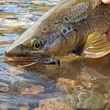






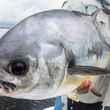
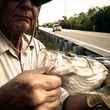


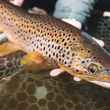




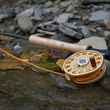
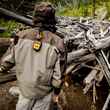




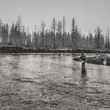


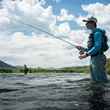
Comments
Gregory Howard replied on Permalink
With the high temps almost everywhere more Fly Anglers need to target Smallies. Underrated as a fish on a fly rod and surface takes are hard to beat. Nice to hear an old acquaintance and fellow UMaine alum Dennis Labare has resurfaced. The man knows his entomology. Splashy takes and tight lines to all.
Dennis LaBare replied on Permalink
Greg....please be in touch. My first attempt to leave you a note was, apparently, squashed by the management. Google me. You'll see it. Hope you see this.
Cheers,
Dennis
Pages